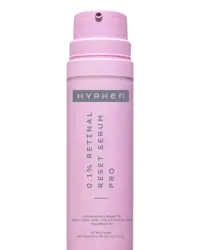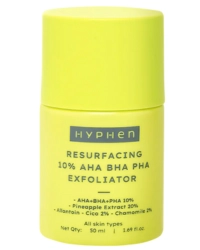Glyco 6 Cream
Review
As of July 4th, 2024, Glyco 6 Cream is currently trending online. In terms of its effects on the skin, it is similar to many other glycolic acid products available in the market.
This product’s price, approximately INR 194, can be a significant advantage if you are located in India. However, it is sold at a high price in many overseas markets; on some websites, it’s close to 18 USD. At this high price, this product is not worth it at all. There is nothing special about the product.
It is a good glycolic acid product, but it’s not worth the huge price it is being sold at on some websites. The high price is probably because it is currently trending.
Let me explain in detail what this product can and can’t do…
This product uses 6% glycolic acid. The manufacturer claims it treats hyperpigmentation, photodamaged skin, and acne and hydrates the skin.
I will now explain the reality behind each of these bold claims…
Hyperpigmentation claim:
Glycolic acid is primarily an exfoliant. It belongs to a class of chemicals called alpha hydroxy acids. These acids gently remove the old cells from the skin’s surface.
Old skin cells fall off regularly and are replaced by younger cells. But some old cells don’t fall off on their own. These stubborn old cells cling to each other, forming a thin layer on the skin’s surface. Apart from giving skin a dull look, this thin layer also causes many skin concerns, ranging from dehydration to irritation and redness.
Exfoliation is the process of forcibly removing these old cells by an external agent. The agents are called exfoliants. Glycolic acid is an exfoliant.
Glycolic acid helps brighten the skin by removing these old cells gently. The word ‘gently’ is important because some physical exfoliants, like seeds, also exfoliate but are harsh on the skin.
One of the side effects of these old cells is hyperpigmentation. The old cells don’t cause hyperpigmentation, but they carry pigmentation. This is a bit confusing, but please keep reading. It will become apparent in the next three lines.
Hyperpigmentation occurs when cells have an excess of a pigment called melanin. Some old cells that don’t fall off on their own can have an excess of pigment. When these old cells are forced to fall off by an exfoliating agent like glycolic acid, the pigment they carry in them also falls off, reducing the pigmentation on the face.
However, it’s important to note that not all hyperpigmentation is in these old cells. A significant amount of hyperpigmentation is in cells that are not on the surface, and the 6% glycolic acid cannot remove this deeper level of hyperpigmentation. Understanding this limitation can help you make informed decisions about your skincare routine.
So, it is appropriate to say that at 6%, glycolic acid will reduce only surface-level pigmentation, not all pigmentation.
However, glycolic acid is not the only acid that can do this in skin care. Other alpha hydroxy acids, like lactic and mandelic acids, also reduce surface pigmentation. We must be aware of this so we don’t wrongly assume that only glycolic acid can do this and put it above the rest when reducing surface-level pigmentation.
Photodamaged claim:
Studies show that glycolic acid can treat photodamage to a certain extent on the skin, but not at the concentration in which it is used in this product. Glycolic acid has to be at least 8% or much higher to impact photodamaged skin. Photodamaged skin is the damage skin experiences when exposed to the sun’s UV rays.
A word of caution: if you experience photodamage, glycolic acid should not be your go-to product. We need to reduce inflammation and neutralise the harm the sun’s rays cause to the skin cells, and there are better products that can do that than glycolic acid. Also, the best way to treat photodamage is to wear sunscreen. Photodamage ages your skin and causes skin cancer. So sunscreen is the best product we can use for our skin. Everything else comes a distant second.
Acne claim:
Glycolic acid is not classified as an acne-treating ingredient. It can help prevent acne and reduce the pigmentation that can come from it. It cannot, however, effectively treat acne once it is on your face.
It prevents acne by exfoliating our skin. If we don’t exfoliate the stubborn old cells, they make their way to the skin’s pores and clog them. Pores are tiny openings on the skin. The first step towards acne is clogged pores. By helping reduce this clogging of pores, glycolic acid reduces the chances of acne occurring.
Glycolic acid is also an anti-inflammatory and an antioxidant. Both these properties help prevent post-inflammatory hyperpigmentation that can come from acne. However, glycolic acid must be used at higher concentrations to exhibit these properties. It cannot produce these effects at a low concentration of 6%. Glycolic acid, at the concentration needed for these properties, can only be administered by a professional and should not be done at home.
A research study showed that glycolic acid at a very low concentration, formulated at the proper acidic pH of 3, can eliminate the bacteria that cause acne. However, the manufacturer of this glycolic acid cream does not mention the product’s pH, so I wonder if this product can deliver this benefit. But let’s assume it does.
Regarding acne, it is important to understand what 6% glycolic acid can and can’t do: It cannot fully treat acne. It can have some impact on reducing the bacteria that cause acne. It cannot reduce post-inflammatory hyperpigmentation from acne. It can only reduce surface-level pigmentation because of its exfoliating properties.
Hydrating claim:
Glycolic acid is a humectant. Humectants are water magnets. They bind themselves to water molecules and keep them in the skin, stopping them from evaporating into the atmosphere. This keeps skin hydrated. Hydrated skin is soft and plump, has a good glow and reduces the chances of breakouts (like acne, pimples, blackheads and whiteheads) on the skin.
At the 6% concentration, this hydrating effect will be minimal.
Conclusion:
It is a normal glycolic acid product. The 6% concentration of glycolic acid makes it a mild glycolic acid product. Its price is a huge plus if you are based in India.
The primary benefit of this product is exfoliation. The side effect of this benefit is a reduction in top-level pigmentation. It does this but at a slightly slower pace. The slightly slower pace is helpful in some ways because glycolic acid can sometimes irritate skin, especially brown and black skin. So, this is a good product if you want to use glycolic acid for exfoliation but don’t want to use a high concentration because it might irritate your skin. It would be worth it if it were sold at INR 195. It is not worth it if it is being sold for upwards of USD 10, as it is on some websites.
Conclusion
It is a normal glycolic acid product, and the 6% concentration of glycolic acid makes it a mild glycolic acid product. Its price is a huge plus if you are based in India.
This product’s primary benefit is exfoliation. Its side effects are a reduction in top-level pigmentation and, to some extent, prevention of acne.
It exfoliated but at a slightly slower pace. The slightly slower pace is helpful in some ways because glycolic acid can sometimes irritate skin, predominantly brown and black skin. So, this is a good product if you want to use glycolic acid for exfoliation but don’t want to use a high concentration because it might irritate your skin.
It would be worth it if it were sold at INR 195. It is not worth it if it is being sold for upwards of USD 10, as it is on some websites.
The manufacturer does not mention its ingredients. Keeping its ingredient list a secret is not consumer-friendly.
Frequently asked questions
What is glyco 6 cream used for?
The primary benefit of this product is exfoliation. Exfoliation brightens the skin and reduces the chances of breakouts like acne, pimples, blackheads, and whiteheads. It also removes the pigmentation in the cells on the top layer of skin.
Glycolic acid, though a good ingredient, can be irritating if you have a darker skin tone or have sensitive skin. At 6% concentration, it is very mild, and you can use it without worrying about the side effects. Always listen to your skin!
Can I use 6% glycolic acid cream daily?
No. We should not over-exfoliate skin. Over-exfoliation makes skin dehydrated, irritated, red and inflammed. Eventually, it will also lead to pigmentation. Stick to 1 to 2 times a week. If you are confident that your skin is reacting well, try three times a week every other week. Go slow is the mantra for glycolic acid.
Can glyco 6 lighten skin?
No. It does not change the colour or skin tone in any way.
Glyco 6 brightens the skin by removing old, unwanted cells from the top layer. When these cells shed, the pigmentation they carry inside them also goes.
Using this product on dark knees can, over time, reduce the darkness on the knees.
A word of caution: don’t overuse.
Another word of caution: Use it at night.
A final word of caution: Glycolic acid makes your skin photosensitive. So don’t forget sunscreen the next day. Otherwise, your skin will pigment and return to where you started.
How to use the product?
Cleanse your face. Gently pat it on your skin. Leave it on for a couple of minutes.
Top the product with a moisturiser or a cream. Make sure the product you are applying on top of this product does not have niacinamide.
Please don’t use it more than three times a week. 1 to 2 times is safer.
Use in the nighttime.
Please remember your sunscreen the next day. Glycolic acid makes your skin very photosensitive, so stepping out without sunscreen will damage your skin.
Ingredients: Normally, I list and analyse the first 10 ingredients used in the product. The manufacturer has not listed the product’s ingredients. So, I cannot do an ingredient analysis.
The packaging of the product mentions it uses 6% glycolic acid. 6% glycolic acid is the main ingredient of the product as per the product’s promotional material. I have reviewed the product based on this information.








